Those We've Lost In 2024 (Part 4)
With 2024 coming to a close, New York has lost a number of notable LGBTQ+ icons including Ken Page, Morgan Jenness, David Garrard Lowe, and more.
Halfway into the year, I covered the lives and legacies of a number of notable LGBTQ+ individuals who passed away in 2024 but who had left their mark on NYC and the world at large. At the time, these included Maurice Hines, Steve Ostrow, Cecilia Gentili, Dee Finley, Shelly Weiss, DJ Stacy (Ledwith), David Mixner, Ruby Lynn Reyner, Andrew Crispo, Joan Gibbs, Christopher Durang, Mary Ann Zielenko, REX, Patti Astor, Robbi Mecus and KoKo Aviance (Thay Floyd).
In this newsletter, I’ll be highlighting a number of individuals who passed on during the latter half of the year, including Morgan Jenness, Needles Jones (Ira Abramowitz), David Garrard Lowe, Troy Masters, Paul Morrissey, Gil Neary, Ken Page and Tom Porton. If you missed it, in last’s week letter I covered Billy Bean, Roy Blakey, Bette Bourne, Peggy Caserta, Christopher Ciccone, Gavin Creel, Nikki Giovanni, and Gary Indiana. Once again, if there is anyone else you think has been left out or should be included, please be sure to let me know via comment or message!
25. Morgan Jenness (1952-2024)
On November 12th, 2024 celebrated dramaturg Morgan Jenness, who over the years nurtured and influenced many renowned queer playwrights including Larry Kramer, Maria Irene Fornés and Taylor Mac, passed away at the age of 72. In their later years, Jenness went by both feminine and gender-neutral pronouns; as Mac told the New York Times: "In Act 3 of her life, she was exploring her gender identity." At the time of their passing, Jenness resided at 211 East 11th Street in Manhattan’s East Village and was a much revered and beloved figure within the theater community—especially around Lower Manhattan, where their influence had long cast a wide net.
Jenness was born Heidemarie Schmiege in Giessen, West Germany, on August 23rd, 1952. Their parents divorced shortly after their birth and their mother became a domestic worker, employed by a couple named Fritjof & Andreina Jonassen. By the mid-1950s, the couple had moved to Washington, D.C., bringing Heidemarie and their mother along. Heidemarie eventually attended Kent State University before moving to New York City, at which point they changed their name to Morgan Jenness. They took their first name from Morgan le Fay, the mysterious enchantress from the legend of King Arthur.
By 1979, Jenness was working at the Public Theater under both George C. Wolfe and Joseph Papp, in various roles ranging from literary manager to director of play development to associate producer of the New York Shakespeare Festival. They also became the associate artistic director at the New York Theatre Workshop as well as an associate director at the Los Angeles Theater Center in charge of new projects. Over the many years of their career, Jenness worked as a dramaturg, workshop director, and/or artistic consultant for the Young Playwrights Festival, the Mark Taper Forum, the Playwrights Center/Playlabs, the Bay Area Playwrights Festival, Double Image/New York Stage & Film, CSC, Victory Gardens, Hartford Stage, Center Stage, and many more. They also participated as a visiting artist and adjunct in playwriting programs at the University of Iowa, Brown, Bread Loaf, Columbia, and NYU, and served on the faculty at Fordham University at Lincoln Center, Pace University, and Columbia University School of The Arts, where they taught theater history and adaptation.
Upon hearing of Jenness’ passing, Oskar Eustis, the longtime Artistic Director at the Public Theater wrote: “For almost half a century, Morgan was a fierce, unwavering advocate for downtown writers and artists, especially for those who work without the sanction of mainstream society. As a dramaturg, agent, teacher, critic, gadfly, and activist, [they] contributed more to our theater world than I can express.”
26. Needles Jones (Ira Abramowitz) (1954 - 2024)
On December 15th, 2024, several sources broke the news of the passing of Needles Jones, the stage name of writer, comedian and performance artist Ira Abramowitz. During the 1970s & '80s in New York City, Abramowitz was quite a known figure among the queer, avant garde, punk, and performance art scenes, and was extremely involved with several of the City’s leading downtown creative hubs including the Mudd Club, Pyramid Club, and Club 57.
Abramowitz was originally both a performer at and a frequently contributing artist to the Mudd Club and Club 57, two of the leading nightclubs in New York City during the late 1970s and early '80s. These two venues in particular were also extremely influential artist hubs, with both clubs influencing one another and attracting the likes of Keith Haring, Klaus Nomi, Madonna, Jean-Michel Basquiat, Lypsinka, Joey Arias, John Sex, Kenny Scharf, Allen Ginsberg, William Burroughs, and countless others. Eventually, Abramowitz became Club 57's final club manager, following in the footsteps of several other notable individuals who had come and gone before him including Ann Magnuson, Andy Rees, Marc Shaiman, and Scott Wittman.
Later in life, Abramowitz moved to Philadelphia and became a drag performance artist there named Needles Jones. According to photographer Robert Carrithers: "I knew Needles Jones back in the day when he was known as Ira Abromovitz. He was the last manager of Club 57. He was intense back then with a unique persona. He had a Hitler-style mustache and would provoke people by his appearance. It was logical that he evolved into the performer Needles Jones. Needles moved out of New York City to Philadelphia and became...known as the self-proclaimed “drag pariah” of Philadelphia. He [was] a performance artist, musician and straight talking drag junkie who receive[d] his name one night whilst performing at the legendary Pyramid Club in New York City when he took to the stage with a needle still in his arm from shooting up backstage."
As his drag/performance artist persona, Abramowitz was also in a band called Needles Jones and The Technophobes. After learning that Jones had passed away, Adam Weiner of the Philly rock band Low Cut Connie wrote: “Needles was an absolutely fearless and captivating drag / trans performance artist who entertained the underground performance art scene in Philadelphia for over 40 years…Needles was hysterically funny. Even after a debilitating stroke, Needles continued to perform and find outrageous ways to entertain people….Thanx for being you, Needles.” Philadelphia-based performance artist Jason Lyndon Lutz added to this, noting that Ira was "one of the funniest, kindest, special, most entertaining people I have ever met. I considered him a mentor in weirdness. My heart is broken. You will be so sorely missed Ira."
27. David Garrard Lowe (1933-2024)
Architectural historian, lecturer and author David Garrard Lowe, who spent much of his life fighting to preserve and protect Beaux-Arts buildings in both New York City and Chicago, passed away in Manhattan on September 21st 2024 at the age of 91. Lowe was known for being fairly private about his personal life, and instead primarily focused on his work and contributions to cultural and architectural history. While his sexuality tended not to be a focal point of his public persona, he was very much an active part of New York's cultural circles, where he contributed greatly to the appreciation and preservation of architectural heritage.
David Garrard Lowenstein was born on January 9th, 1933, in Baltimore. His mother died when he was only six years old after which he and his father then moved to Chicago. Growing up in the Windy City, as a child Lowe would often look up and marvel at the buildings, in awe of how architects like Louis Sullivan and Daniel Burnham had refashioned the city in the late nineteenth century. In particular, Lowe was drawn to those buildings which had been outfitted in a mishmash of styles referred to as Beaux-Arts.
By the 1960s, Lowe started writing about architecture, often about many of those buildings that were falling victim to the wrecking ball, both in Chicago and in his newly adopted hometown of New York City. Like many lovers of the Beaux-Arts era, Lowe was shocked in the mid-'60s when developers tore down the original Pennsylvania Station in Manhattan, a sprawling transit hall inspired in part by the Baths of Caracalla in Rome. Throughout his career, Lowe would pen several books that were love letters to the architecture he treasured, including Lost Chicago in 1975, as well as Chicago Interiors (1979), Beaux-Arts New York (1998), Art Deco New York (2004) and Stanford White’s New York (1992) —the latter of which was edited by his dear friend and fellow preservation activist Jacqueline (Kennedy) Onassis.
Lowe also became a key fixture in the country’s architectural preservation movement, founding the Beaux-Arts Alliance in 1995, a New York-based advocacy group headquartered at 119 East 74th Street in Manhattan. He remained the president of the Alliance until his death. On Legacy.com, the historic restorationist Jean Wiart wrote: “David is to be remembered as a true lover of French arts and architecture. I was so impressed by his encyclopedic knowledge of all matters related to French history and the great Frenchmen who made History in the 'old' world. I will treasure the souvenirs I have of our many meetings at the Beaux Arts Alliance.”
28. Troy Masters (1961-2024)
On December 11th, 2024 news broke that Troy Masters, the pioneering journalist and editor who throughout his lifetime played an active role in numerous notable LGBTQ+ publications, had tragically died by suicide. Masters was 63 at the time of his death. Masters’ publishing career spanned several decades, and over the years he had been heavily involved with Outweek magazine, QW magazine, Lesbian and Gay New York (LGNY), Gay City News, The Pride L.A., and the Los Angeles Blade, among others.
On April 13th, 1961 Troy Masters was born in Gallatin, Tennessee, though he was primarily raised in Nashville, where his stepfather worked as a musician. He also typically spent his summers in Dothan, Alabama, where his grandparents resided. Around the age of 12, Masters realized he was gay when he became obsessed with the musician David Cassidy after attending his concert in Nashville. His family also caught on to this fact, and his stepfather and his friends often taunted him, using slurs and derogatory names. As a result of this hostile environment, Masters left home at the age of 17, and eventually enrolled in and graduated from the University of Tennessee.
Masters then moved to New York City in the early 1980s, and began writing for the computer publication PC Magazine. After seeing many of his friends die during the AIDS crisis, in 1988 he decided to leave PC to work for the gay and lesbian magazine OutWeek. He quickly became its advertising account executive and was working as its senior account executive by the magazine's final issue in July 1991. While at OutWeek, Masters also wrote several articles, primarily publishing stories about HIV activism and research as well as anti-LGBTQ+ violence. When OutWeek folded, Masters then founded his own LGBTQ+ publication, QW magazine, which lasted only 18 months. In February of 1995 he tried again, founding Lesbian and Gay New York (LGNY), which proved to be much more successful. By 1997, it had entered a "pint-sized newspaper war" with fellow queer publication The New York Blade News, which Masters criticized for "having a straight-owned publishing company" and for not using the words "gay" or "lesbian" in its advertising. In 2002, Masters relaunched LGNY as Gay City News, which continues to be published today.
Masters remained with Gay City News until 2015, when he moved to Los Angeles. Upon his West Coast arrival, he co-launched the biweekly newspaper The Pride L.A., but left the publication in mid-2016 due to political disagreements. He then established the Los Angeles Blade in 2017, seen as a sister publication to the long-running Washington Blade. In 2023, the Los Angeles Blade received the Barbara Gittings Award for Excellence in LGBTQ Media from GLAAD. Despite the many recent successes, Masters was tragically found dead in his Los Angeles home on December 11th, 2024, at the age of 63. According to the Los Angeles County Medical Examiner, he had died by suicide. In response, AIDS Healthcare Foundation President Michael Weinstein—who collaborated with Troy on many projects—wrote that Masters was “a champion of many things that are near and dear to our heart…All of who he was creates a void that we all must try to fill…His death by suicide reminds us that despite the many gains we have made, we’re not alright a lot of the time. The wounds that LGBT people have experienced throughout our lives are yet to be healed…”
29. Paul Morrissey (1938-2024)
On October 28th, 2024, American cult film director Paul Morrissey, best known for his long term collaborations with Andy Warhol on films like Flesh (1968), Trash (1970), Women in Revolt (1971) and Heat (1972), passed away at the age of 86. Morrissey’s collaborations with Warhol also extended beyond making films, and included running the publicity and filmmaking activity for Warhol’s Factory, co-conceiving and naming Warhol's traveling multi-media Happening the Exploding Plastic Inevitable, and co-launching the print magazine Interview, which still operates to this day.
Paul Joseph Morrissey was born in Manhattan on February 23rd, 1938, though he primarily grew up in Yonkers. He attended Fordham University, but upon graduating enlisted in the army. While on reserves from active duty, he moved to the East Village in late 1960 whereupon he opened the Exit Gallery, a small cinematheque at 36 East 4th Street. There, he programmed a mix of underground films and documentaries such as Icarus (1960), the first film by Brian De Palma. He simultaneously began making his own short, silent 16mm comedies, including Mary Martin Does It (1962), Taylor Mead Dances (1963) and Like Sleep (1964).
Morrissey first met Andy Warhol in June of 1965 at the Astor Place Playhouse, where the artist was having a retrospective of his work. Taken by Morrissey's resourcefulness and filmmaking expertise, Warhol invited him to his Factory to assist him with his next project Space, which was filmed at the East 47th Street Factory in July of 1965 and featured Edie Sedgwick, Danny Fields, Donald Lyons (a friend of Morrissey's) and folk-singer Eric Andersen. Many more Warhol-Morrissey collaborations would follow, including My Hustler (1965), More Milk, Yvette (1966), Chelsea Girls (1966), Imitation of Christ (1967), Tub Girls (1967), Bike Boy (1967), I, a Man (1967) and Lonesome Cowboys (1968). Morrissey is also responsible for discovering and casting the hunky Joe Dallesandro, who would appear in many subsequent Warhol/Morrissey films.
After the attempt on Warhol's life in June 1968 by Valerie Solanas, Morrissey directed his first solo feature, Flesh, produced for $4,000 by Andy Warhol and starring Joe Dallesandro alongside Maurice Braddell, Geri Miller, Geraldine Smith, Patti D'Arbanville, Louis Waldon, Jackie Curtis and Candy Darling. The commercial and popular success of Flesh led to two more hits including Trash, which starred Holly Woodlawn and is considered the first film to ever cast a transgender actress as the lead's girlfriend. After parting ways with Warhol and the Factory, Morrissey continued to make and work on films, up until his final feature, News From Nowhere (2010), which made its U.S. debut at Film at Lincoln Center in 2011. Morrissey died from pneumonia at a hospital in Manhattan on October 28th, 2024.
30. Gil Neary (1957-2024)
On August 24th, 2024 new spread of the unexpected and untimely passing of Gil Neary, a longtime pillar of the LGBTQ+ community in both New York City and Fire Island. To many, he was lovingly known by his drag alter ego, Bambi Sue, a name under which he wrote for many years as HX Magazine's infamous campy advice columnist. He was also the founding partner of Bank Neary Real Estate, which he co-ran with HX's co-founder, Matthew Bank.
On the day of Neary’s death, Bank (@matthewbank) eulogized his longtime friend and colleague in an Instagram post, writing: "What an unspeakable loss. After beating cancer and on the road to recovery, my dear friend of 35 years and business partner Gil Neary passed away in a car accident. One of the sweetest, funniest, most caring people I have ever known—who spread joy in the world every single day of his life. His impact in the community is now a legacy we will strive to carry on in his honor. Memorial planning is underway and we will share more information when we know it."
Mark Gil Neary born on April 22nd, 1957 and grew up in Queens, New York, eventually studying real estate at Baruch College and the New York Institute of Technology, before furthering his education in Paris. After returning to New York, Neary opened his own real estate company in the late 1980s with a former business partner who retired in 2018. Bank, meanwhile, joined the agency in 2010 after HX Magazine folded after 18 years in operation. Neary, meanwhile, was in fact HX's very first advertiser, with an ad that read: "A castle for every queen.” Neary then became a regular writing contributor to the magazine, penning a much beloved advice column under the moniker, Bambi Sue. The October 17, 1997 cover of HX Magazine even featured Gil dressed up as Bambi Sue, frolicking at Elmo Restaurant in a feature article entitled "All About Chelsea: The Ultimate Guide To New York's Ultimate Gay Neighborhood."
In addition to being a well-known figure in Chelsea, Neary was also a key player on Fire Island, as the longtime owner of a white, castle-like home called Reflections. Reflections was once the home of Gloria and Larry DeMann and under Gil's ownership it became known for annually hosting the opening birthday party of the Fire Island season. Shortly before traveling to Maine, where he would die in a fatal accident, Neary was honored at the 2024 Pines Party for his many contributions over the past 25 years to the Fire Island community. In response to Neary’s death, Bank-Neary agent Alexander Kacala (@faymeproblems) wrote on Instagram about Gil's legacy and impact: "He was a parental figure, a community leader, a sister, a back room buddy, a mentor, a boss, a sister, a friend. A foundation I clung to when I had nothing else. He was this to us all."
31. Ken Page (1954-2024)
On September 30th, 2024 beloved stage actor and cabaret singer Ken Page passed away at the age of 70 at his home in St. Louis. Though he had a long and varied career, Page was perhaps best known for originating the role of Ken in the original Broadway production of Ain't Misbehavin' (1978), playing Old Deuteronomy in the original Broadway and filmed stage adaptation of Cats (1982), playing The Lion in the original Broadway production of The Wiz (1975), and playing Nicely-Nicely Johnson in the first Broadway revival of Guys & Dolls (1976).
Kenneth Page was born on January 20th, 1954 and was raised in a Catholic household in St. Louis, Missouri. While attending St. Nicholas elementary school, he was encouraged by a teacher and older cousin to pursue theater. After graduating from Bishop DuBourg High School in 1972, he attended Fontbonne College in Clayton, Missouri on a full scholarship, where he majored in theater. Page then began his career in the chorus of the Muny outdoor theater in St. Louis. Playing The Lion, he made his big Broadway debut in The Wiz, and followed up that role by playing Nicely-Nicely Johnson in the all-Black revival of Guys & Dolls, for which he won a Theatre World Award. He was then featured in the original cast of the Fats Waller musical revue, Ain't Misbehavin', (Drama Desk Award), a role he later reprised in the 1982 television broadcast. He also returned to the show in its 1988 Broadway revival.
In 1982, Page played Old Deuteronomy in the legendary musical Cats, and returned to play the part in the 1998 video release of the show. Other theatrical shows which Page performed in over the years included Damn Yankees (1981), Call Me Madam (1995), Randy Newman's Faust (1995-1996), It Ain't Nothin' But the Blues (1999) and The Pajama Game (2002), among others. Page additionally had many roles on TV and in films like the Torch Song Trilogy (1988), Dreamgirls (2006), and perhaps most famously, The Nightmare Before Christmas (1993), for which he became extremely recognized for voicing a character named Oogie Boogie. He would regularly reprise his role as Oogie Boogie in several other Disney productions.
Page openly identified as gay, once stating: "I'm not closeted, never have been to my knowledge. But 'gay' means so many different things to people." He also advised others: "Be careful. I understand, believe me—because I fought for your label. But don't define yourself by the label you put on yourself." Meanwhile, André De Shields, another legendary queer Black theater actor, eulogized his dear friend: “Ken, my friend, my colleague, my valued confidante, my beautiful sibling, I salute you with ubuntu: ‘I am because we are.’ On first hearing of your departure, my heart was so heavy I feared it might break…Alas, you are no longer here. Where are you? Are you there? No one seems to know where you are. We miss you. We love you. I do not worry about you; you are where you must be. Besides, I am confident that etched on your heart, as on mine, lives the eternal teaching of our forever mentor, Geoffrey Holder: ‘Actors do not die; they simply go on tour.’ Have a great tour, Ken. Break legs.”
32. Tom Porton (1949-2024)
On July 12th, 2024, Tom Porton passed away at the age of 74 while living in an assisted living center in the Bronx. For a good portion of his life, Porton was a much beloved teacher at the borough’s James Monroe High School, where he inspired students to embrace the arts and be engaged with the world, particularly through AIDS programming and various other community service-related projects.
Thomas Jeffrey Porton was born on October 18th, 1949, in Massachusetts. After his family moved to New York, Porton graduated from high school and enrolled in NYU, where he received a bachelor’s degree in 1969 and a master’s degree in media ecology. He began teaching at Monroe High School in the Bronx in 1970. His primary role there was as a teacher of English grammar and literature as well as the coordinator of student affairs, but his impact there ended up being far greater. When AIDS became rampant in the 1980s, Porton started to collaborate with Project Bravo, an H.I.V./AIDS volunteer organization affiliated with Montefiore Medical Center in the Bronx, in order to train his students on how to educate their peers about the disease. He began dispersing health information from a minivan, and devised a reading and writing curriculum to motivate students to write letters of support to patients coping with the disease. Going even further, Porton founded the AIDS Lives in Every Neighborhood Players, a group of teachers who presented dramatic productions about the disease to teenagers and community organizations.
In response to Porton’s death, many former students remarked on the longterm impact their beloved teacher had on their lives. David Gonzalez, for example, told the New York Times: "He introduced us to literature, film, poetry, the performing arts and the broader world—a world that was not readily available to kids in the Bronx in the early ’70s." Janelle Roundtree, meanwhile, noted: “He changed Monroe. He was in the forefront of so many things.”
In 1995, Porton became the first ever teacher from New York City to be inducted into the National Teachers Hall of Fame. In 2011, he won a Kennedy Center/Stephen Sondheim Inspirational Teacher Award. In 2016, he finally retired. When former students had learned he was ailing, they helped organize an online memorial for their beloved educator. “I would never have had the confidence to do what I do without him,” Mr. Gonzalez remarked elsewhere in The Times, “He changed my life forever.”
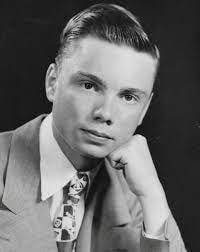
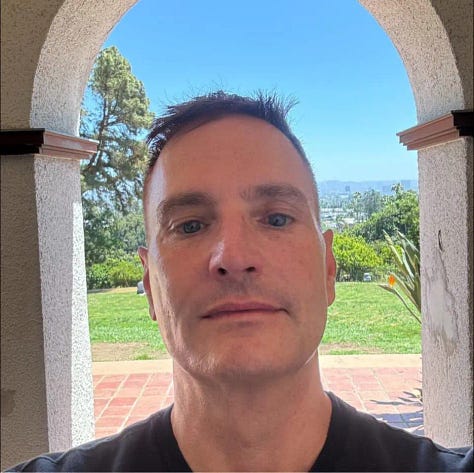
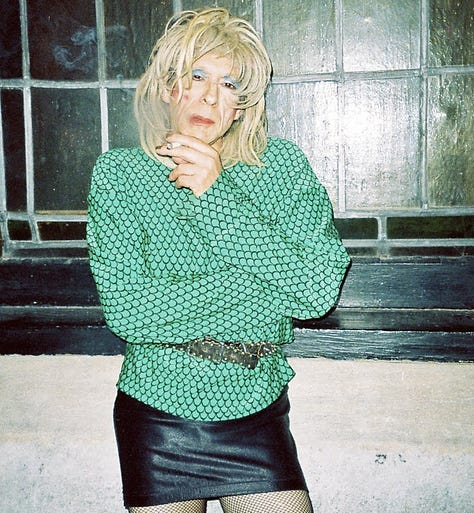
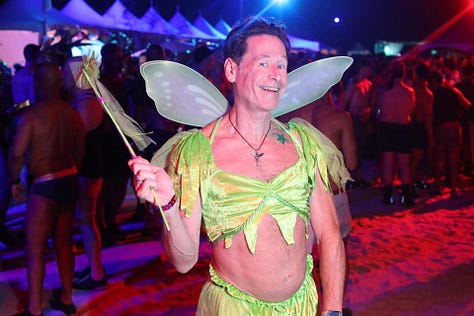
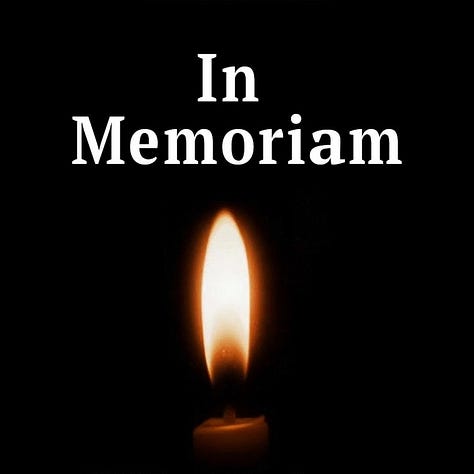
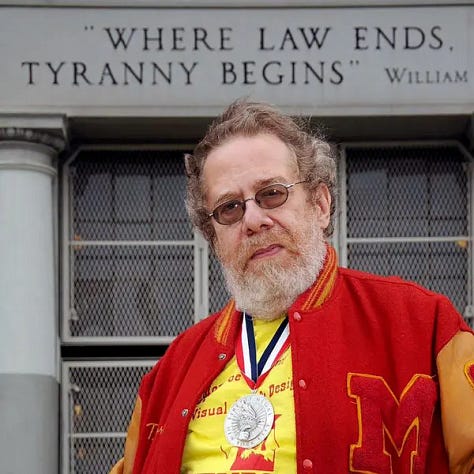
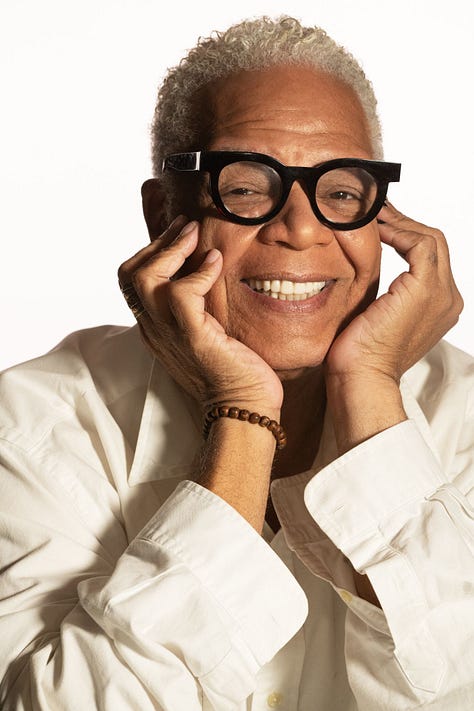
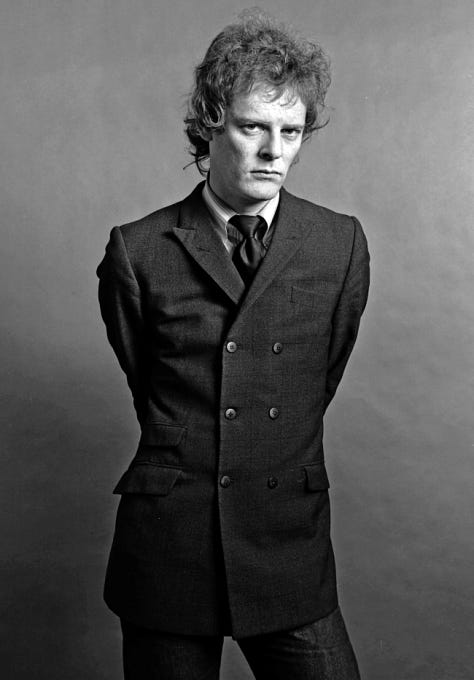
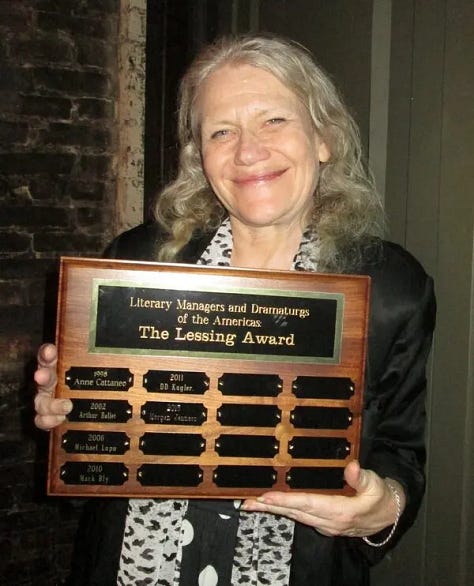



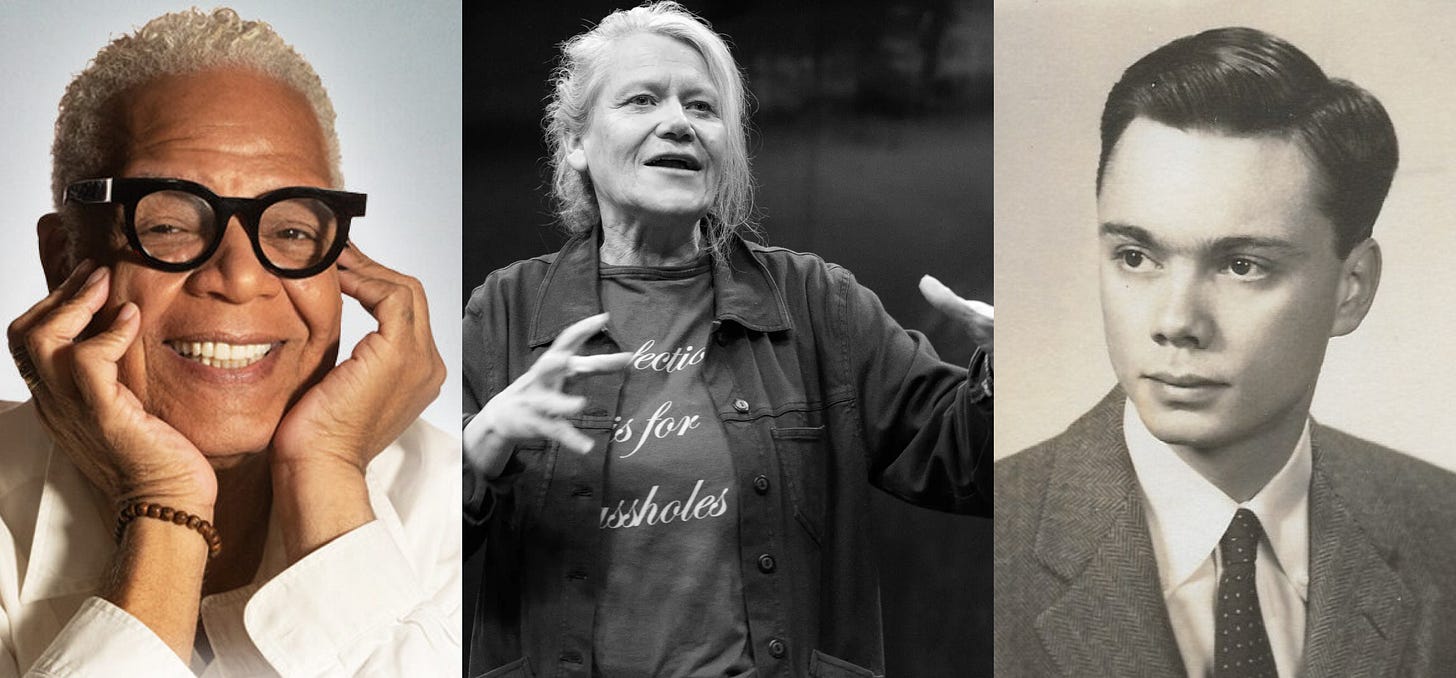





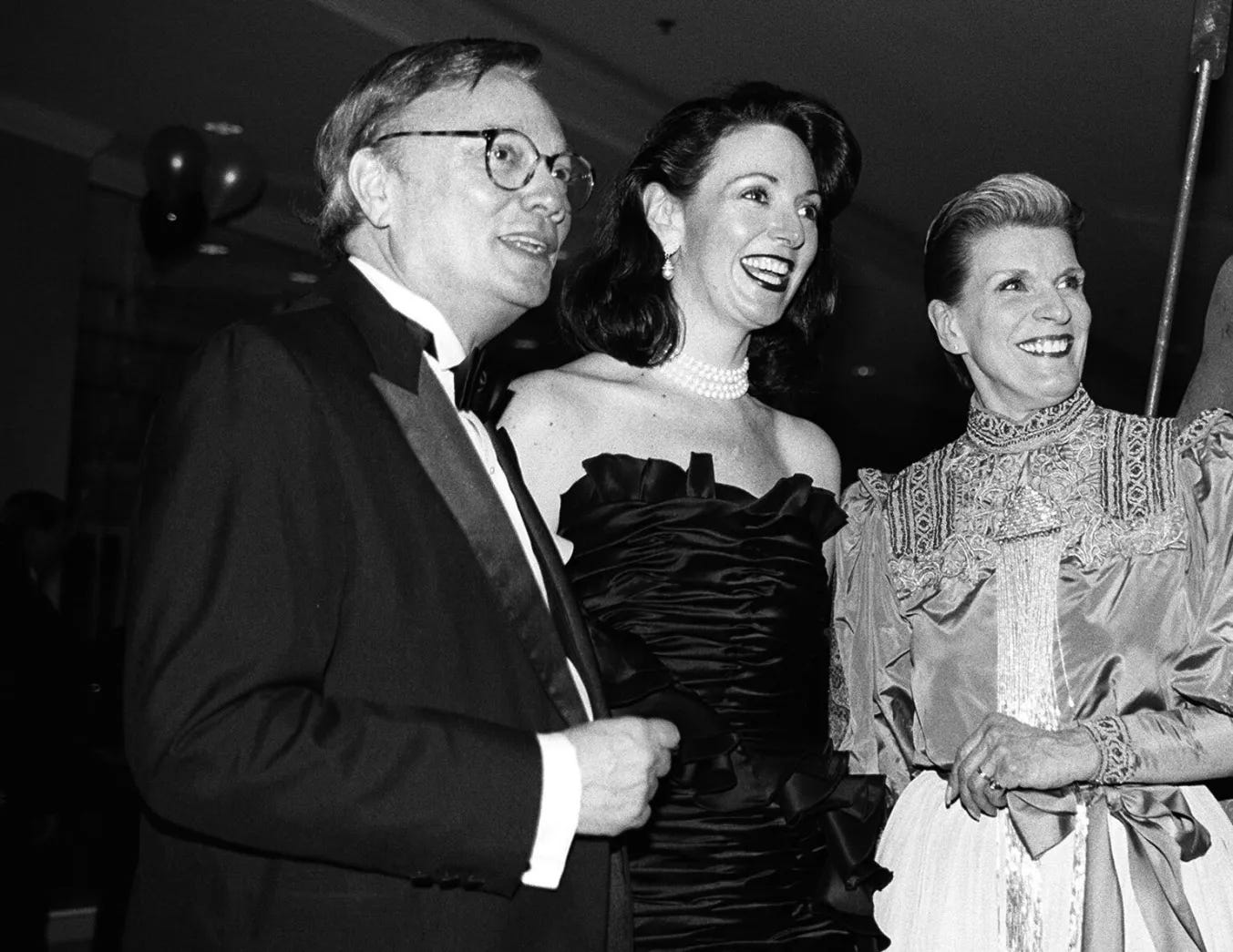
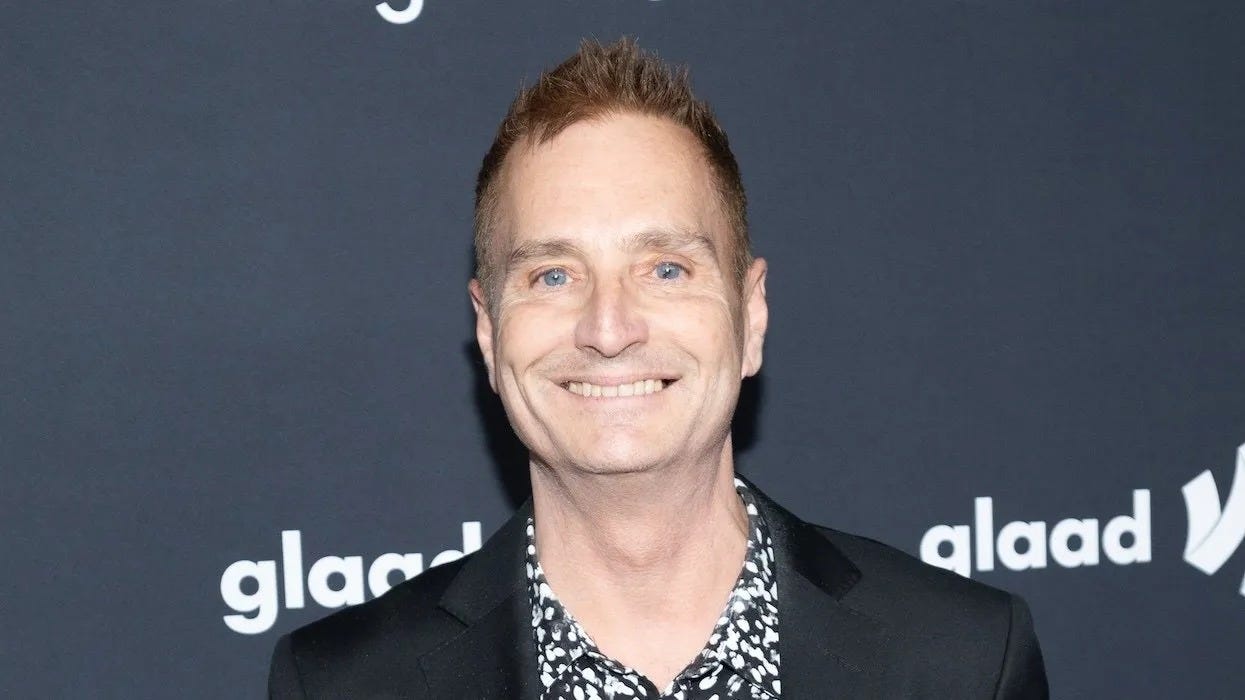








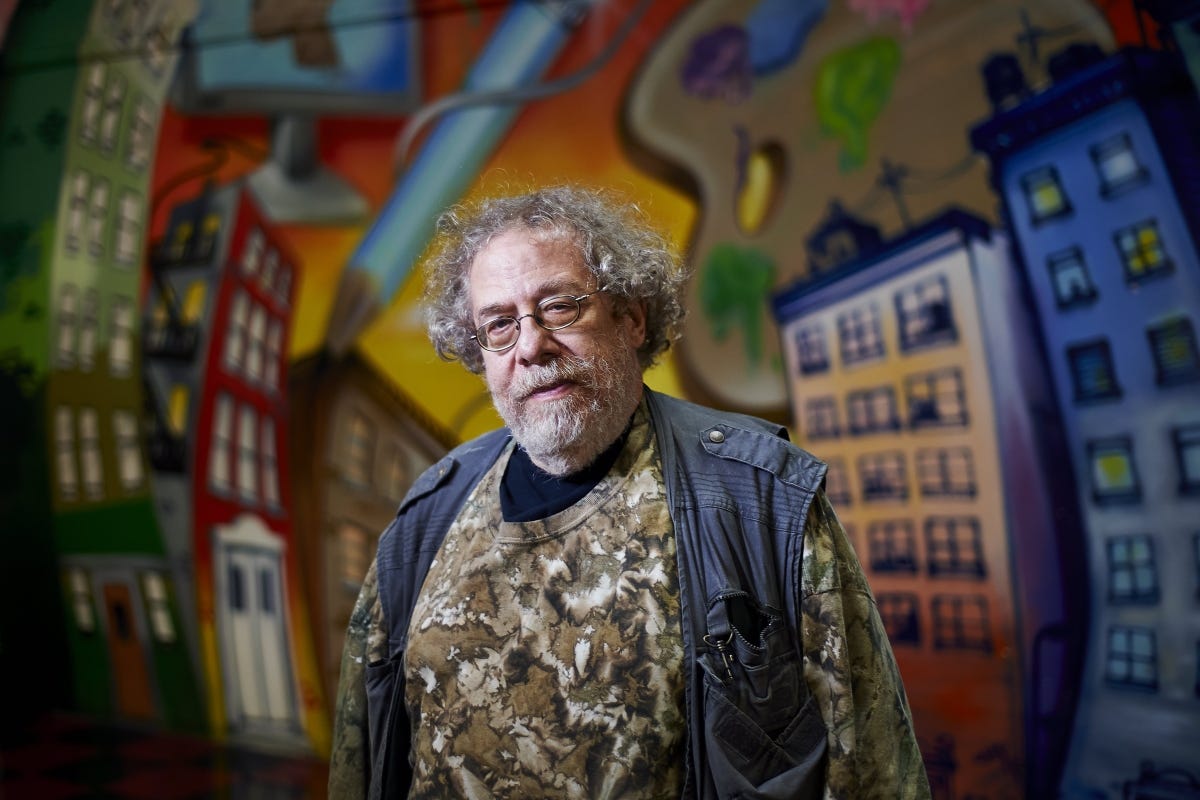
Thank you for sharing these lives with us throughout the year, Marc. 💙